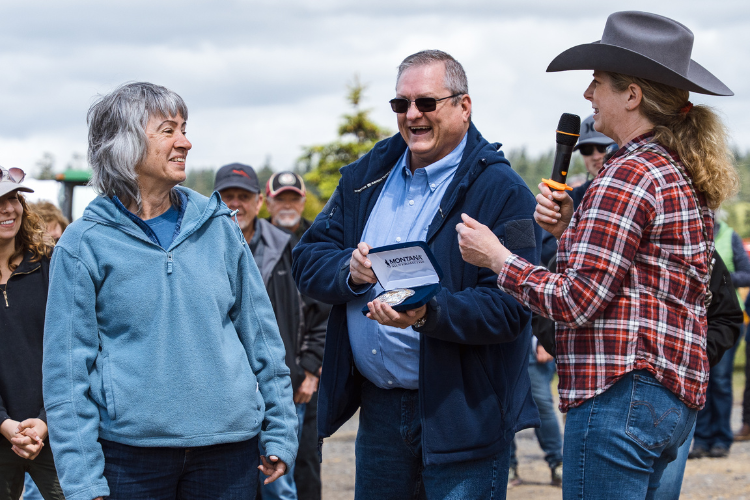Riparian Projects at Colvin Ranch
posted on
April 26, 2024

Scatter Creek runs about a mile and a half through the back part of Colvin Ranch. This time of year, the meadows along the creek are drying out from winter rains and flooding, the grass is growing, and we're just now able to utilize the meadows for grazing.
In the summer, the meadows are a key source of grass for our cattle. We use temporary electric fencing to set up smaller sections within the meadow fields for intensive grazing. Nearly every day we move cattle to a new section so they always have fresh grass to eat, and the plants that have been grazed have a chance to recover and regrow.
In recent years, the creek has dried up completely in sections earlier in the summer, which means that we haven't been able to graze cattle in some of the more remote pastures when grass is plentiful because we don't have a water source for the livestock. This puts more pressure on our other pastures, and can mean that we need to supplement hay earlier than we otherwise would if we could utilize the grass, increasing our costs.
But when we do have cattle in the meadows, we take steps to protect the creek banks and the water quality. One of the biggest changes we made many years ago was fencing off the creek to protect it from erosion. To provide water to livestock, we utilize a nose pump system that the cattle operate themselves to pump just enough fresh water out of the creek for them to drink, like a drinking fountain for cows.
Another major project that was done nearly 20 years ago with the Thurston Conservation District was the Riparian Planting Project, funded by the Department of Ecology. Through this project, 1,900 trees were planted along 5,250 feet of Scatter Creek at the ranch. Today, these trees stabilize the banks of the creek, reduce erosion, provide shade to keep the water cool, and create habitat for animals.
When we undertake projects like these, we do so knowing that it will be years (or decades) before we fully start to see the benefits. But when you're managing a resource not just as a business, but for the benefit of future generations, it makes this work even more rewarding.



